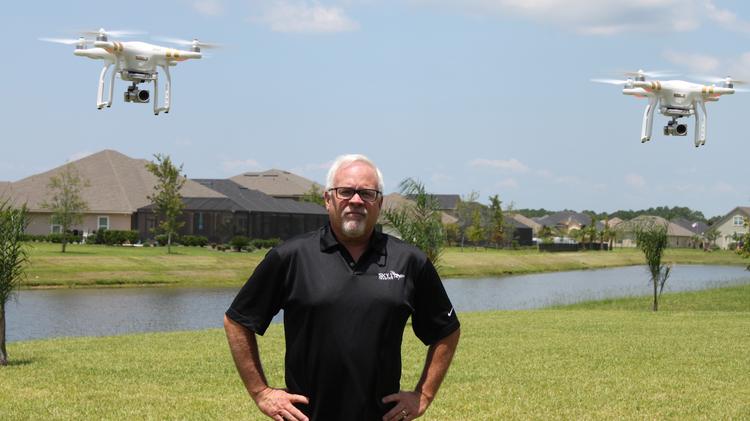
The Federal Aviation Administration has granted more than 1,000 exemption approvals for drones in its effort to safely expand their operations.
The 1,008 Section 333 exemptions include grants for “new and novel approaches to inspecting power distribution towers and wiring, railroad infrastructure and bridges,” the FAA said Aug. 4 in a statement.
A report published July 30 by the Arlington, Virginia-based Association for Unmanned Vehicle Systems International highlights some of the innovative ways unmanned aerial vehicles, more commonly known as drones, are being put to work, including inspecting industrial flare stacks that stand several hundred feet tall and emit 2,000-degree-Fahrenheit heat.
Building contractors also can use drones to inspect work being done on roofs instead of asking workers to climb up and do it, while civil engineering contractors can use drones to inspect bridges, towers, and wind turbines without putting people at risk to do so, the report says.
“With the FAA offering 333 exemptions to companies, they are able to use unmanned aircraft with optical (traditional), thermal/infrared, even gas-detection (leak) sensors,” a spokesman for Morton, Illinois-based unmanned aerial vehicle manufacturer Homeland Surveillance & Electronics L.L.C. said Aug. 6 in an email. “And since UAVs are so much smaller in size, they can safely operate closer to the lines/structures without risking the lives of pilots or infrastructure, all with returning a higher quality data output.”
“Bridge inspections are a hot topic right now because of the amount of failures and concerns we’ve had over the last 20 years,” the spokesman continued. “UAVs can quickly and effectively be used to fly around supports and foundations to show signs of premature wear/damage. UAVs can inspect the underside of decks and roadways — imagine humans trying to get data that close and quickly while being suspended over a rushing river or massive ravine.”
Railroads can also use UAVs to measure changes in track integrity and capture time-lapse data to compare changes over time. Before UAVs, this was done manually by walking or rolling a crew down the tracks to collect the data, the spokesman said.
Utility inspections also are safer and faster with drones. According to a petition granted to Atlanta-based Southern Company Services Inc. by the FAA, drones “would vastly reduce risks to crews responsible for power line inspections and significantly hasten power restoration in the event of storms, hurricanes, tornadoes, and other weather events.”
http://www.businessinsurance.com/article/20150811/NEWS06/150819972/faa-exemptions-for-commercial-drone-flight-top-1000?tags=|80|329|302

